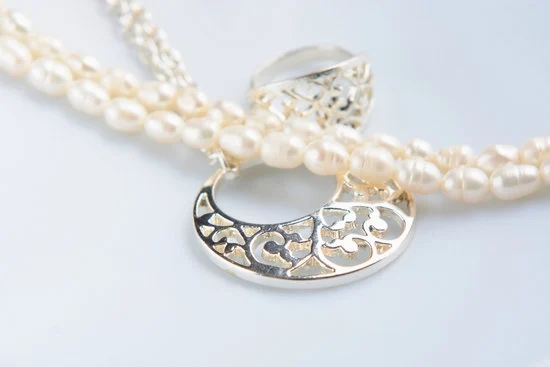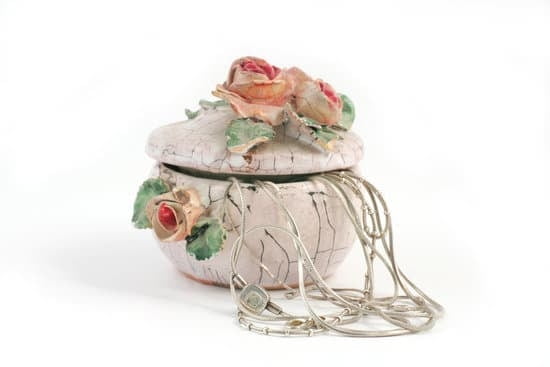The history of Turkish jewelry is rich and diverse, with a legacy that dates back centuries. From the intricate designs to the symbolic meanings, Turkish jewelry has captivated the world with its beauty and cultural significance. In this article, we will explore the evolution of Turkish jewelry techniques, the influences on its design, notable types of Turkish jewelry, and its historical significance.
Turkish jewelry holds a significant place in the history of art and design, showcasing a variety of influences from different cultures and civilizations. The craftsmanship and symbolism behind each piece tell stories of tradition, belief, and heritage. As we delve into the world of Turkish jewelry, we will uncover how it has evolved over time while maintaining its cultural essence.
From traditional techniques to modern adaptations, Turkish jewelry continues to make an impact on global fashion and style. By understanding the history and significance of Turkish jewelry, we can appreciate its role in shaping the artistry and craftsmanship that is cherished around the world. Join us as we embark on a journey through the mesmerizing history of Turkish jewelry.
Influences on Turkish Jewelry Design
Geographical and Cultural Influences
The history of Turkish jewelry is a reflection of the rich cultural tapestry of the region. Over the centuries, the design of Turkish jewelry has been influenced by various civilizations, including the Greek, Roman, Byzantine, Persian, and Ottoman empires. These diverse cultural influences have contributed to the unique and distinct style of Turkish jewelry, characterized by intricate patterns, vibrant gemstones, and elaborate designs.
Natural Elements
Another significant influence on Turkish jewelry design is the natural landscape of Turkey. The country’s abundant natural resources, such as gold, silver, and a variety of precious gemstones, have played a pivotal role in shaping the artistic expression of Turkish jewelers. The use of elements such as flora and fauna in jewelry design reflects the deep connection between nature and Turkish culture.
Religious Symbolism
Religious beliefs have also had a profound impact on the design of Turkish jewelry. Islamic motifs and symbols are often incorporated into traditional Turkish jewelry pieces, reflecting the spiritual values and beliefs held by many Turks. These symbols not only add significance to the jewelry but also serve as a form of cultural expression and identity.
The history of Turkish jewelry is a testament to the enduring legacy of craftsmanship and artistry that has been passed down through generations. Understanding these influences provides valuable insight into the cultural significance and timeless appeal of Turkish jewelry.
The Evolution of Turkish Jewelry Techniques
The history of Turkish jewelry is rich and diverse, especially when it comes to the techniques used in creating these stunning pieces. Over the centuries, Turkish jewelry has evolved and adapted to incorporate various influences, resulting in a wide range of techniques that are still practiced today.
One of the most notable aspects of Turkish jewelry techniques is the intricate metalworking involved. From filigree to granulation, Turkish artisans have mastered the art of manipulating metals to create elaborate designs that are both beautiful and durable. Additionally, the use of gemstones and enamel work is also a distinctive feature of Turkish jewelry techniques, adding vibrant colors and textures to the pieces.
To give you a better understanding of the evolution of Turkish jewelry techniques, here are some key points to consider:
- Filigree: This delicate technique involves twisting and soldering fine metal wires together to create intricate patterns and designs. It has been a prominent feature in Turkish jewelry since ancient times.
- Granulation: This technique involves fusing tiny metal granules onto a metal surface to create decorative patterns. It requires a high level of skill and precision, making it a hallmark of traditional Turkish jewelry.
- Enamel work: The use of colorful enamel in Turkish jewelry dates back to the Byzantine era, and it continues to be an integral part of Turkish jewelry design today.
As you can see, the evolution of Turkish jewelry techniques is a testament to the creativity and craftsmanship of its artisans throughout history. These techniques have not only stood the test time but also continue to inspire modern jewelers around the world as they seek to incorporate elements of this rich tradition into their own designs.
Symbolism and Meanings in Turkish Jewelry
Turkish jewelry has a rich history and is known for its intricate designs and deep symbolism. Throughout the centuries, Turkish jewelry has been adorned with various symbols and meanings that reflect the cultural, religious, and social beliefs of the people. From protection from evil to expressions of love and marriage, the symbolism in Turkish jewelry is diverse and tells a story of its own.
One of the most prevalent symbols in Turkish jewelry is the evil eye, also known as Nazar. It is believed to protect the wearer from negative energy and bring good luck. The evil eye symbol can be found in various forms of Turkish jewelry, including necklaces, bracelets, and earrings. Another common symbol is the tulip, which represents prosperity and abundance. Tulip-shaped motifs are often seen in traditional Turkish jewelry pieces.
In addition to these protective symbols, Turkish jewelry also conveys messages of love and devotion. The use of heart-shaped designs or depictions of lovebirds in jewelry symbolize affection and strong relationships. Moreover, symbols with religious significance such as crescents and stars are frequently incorporated into Turkish jewelry to represent faith and spirituality.
The use of symbolic motifs in Turkish jewelry not only adds beauty to the pieces but also carries significant cultural meanings that have been passed down through generations. Understanding the symbolism behind each design enriches the appreciation for the artistry and craftsmanship behind Turkish jewelry.
| Symbol | Meaning |
|---|---|
| Evil Eye (Nazar) | Protection from negative energy and good luck |
| Tulip | Prosperity and abundance |
| Heart-Shaped Designs/Lovebirds | Affection and strong relationships |
| Crescents/Stars | Faith and spirituality |
Notable Types of Turkish Jewelry
Turkish jewelry is known for its intricate designs, striking gemstones, and rich cultural significance. Throughout history, various types of Turkish jewelry have been crafted and prized for their beauty and craftsmanship. From traditional styles to contemporary adaptations, Turkish jewelry has a wide variety of notable types that showcase the country’s artistic heritage.
Ottoman Jewelry
One of the most notable types of Turkish jewelry is Ottoman jewelry, which reflects the opulence and grandeur of the Ottoman Empire. Characterized by elaborate designs, colorful gemstones, and intricate filigree work, Ottoman jewelry has been treasured for centuries. Pieces such as earrings, necklaces, bracelets, and rings were often adorned with symbols of power and wealth, making them highly sought after by royalty and nobility.
Tassel Jewelry
Tassel jewelry is another prominent type of Turkish jewelry that has gained popularity in recent years. This style features long chains or cords adorned with tassels made from silk or other textiles, often embellished with beads or precious stones. Tassel jewelry captures the essence of traditional Turkish aesthetics while incorporating modern influences, making it a favorite choice for both special occasions and everyday wear.
Filigree Silver Jewelry
Filigree silver jewelry is a signature type of Turkish jewelry known for its delicate metalwork and timeless elegance. With intricate patterns and motifs meticulously crafted from silver threads, filigree jewelry represents the exceptional skill of Turkish artisans. This type of jewelry has been cherished for centuries for its exquisite beauty and craftsmanship.
As evident from these examples, Turkish jewelry encompasses a wide range of styles that have captivated people around the world. Each type tells a unique story and holds a special place in the history of Turkish jewelry. Whether it’s Ottoman pieces symbolizing regality or modern tassel jewelry embodying cultural fusion, these types represent the enduring allure and significance of Turkish jewelry traditions.
Historical Significance of Turkish Jewelry
The history of Turkish jewelry is rich and diverse, reflecting the country’s long and storied past. Turkish jewelry has been a significant part of the region’s culture for centuries, with each piece carrying its own unique history and symbolism. From the Ottoman Empire to the present day, Turkish jewelry has evolved and adapted, but its historical significance remains undeniable.
One of the most notable aspects of the history of Turkish jewelry is its role as a symbol of wealth and prestige. Throughout history, Turkish jewelry has been worn by both men and women as a display of social status. The designs often incorporated precious metals such as gold and silver, as well as gemstones like rubies, emeralds, and diamonds. These intricate pieces were not only symbols of wealth but also held cultural significance, often being passed down through generations.
Another important aspect of the historical significance of Turkish jewelry is its connection to religious and spiritual beliefs. Many pieces were adorned with symbols such as the evil eye or motifs from nature that held deep meanings within Turkish culture. For example, the use of tulip motifs in jewelry design reflects the flower’s significance in Ottoman art and architecture.
The craftsmanship involved in creating traditional Turkish jewelry also holds historical significance. Techniques such as filigree, engraving, and stone setting have been passed down through generations, contributing to the preservation of this art form. This dedication to preserving traditional techniques has helped maintain the cultural importance of Turkish jewelry in modern times.
| Aspect | Details |
|---|---|
| Social Status | Turkish jewelry has historically been worn as a display of social status, incorporating precious metals and gemstones. |
| Religious Symbolism | Many pieces were adorned with symbols with deep meanings within Turkish culture, reflecting religious beliefs and spirituality. |
| Craftsmanship | The preservation of traditional techniques such as filigree, engraving, and stone setting has contributed to maintaining the historical significance of Turkish jewelry. |
Modern Adaptations of Traditional Turkish Jewelry
Turkish jewelry has a long and rich history, with its roots dating back centuries. While traditional Turkish jewelry holds significant cultural and historical value, it has also evolved to adapt to modern tastes and trends. Today, modern adaptations of traditional Turkish jewelry continue to be popular both in Turkey and around the world.
Some of the ways in which traditional Turkish jewelry has been adapted for modern audiences include:
- Incorporating contemporary designs: Traditional Turkish motifs and patterns are often incorporated into more modern and minimalist designs, appealing to a wider audience.
- Using alternative materials: While traditional Turkish jewelry is often made with gold, silver, and gemstones, modern adaptations may incorporate alternative materials such as stainless steel or synthetic gemstones for a more affordable option.
- Embracing new technologies: Modern jewelry-making techniques, such as 3D printing or laser cutting, have been embraced by Turkish jewelers to create innovative and unique pieces that still pay homage to traditional designs.
Despite these adaptations, modern Turkish jewelry continues to honor the rich history of Turkish jewelry making while simultaneously appealing to contemporary tastes. The fusion of old and new allows for the continued appreciation of traditional Turkish craftsmanship while remaining relevant in today’s global market.
In addition, the popularity of modern adaptations of traditional Turkish jewelry has led to an increased interest in learning about the history of Turkish jewelry among consumers. As a result, there has been a resurgence in demand for pieces that showcase traditional techniques and motifs alongside more contemporary elements. This has helped sustain the time-honored craft of Turkish jewelry making while allowing it to thrive in a rapidly changing world.
How Turkish Jewelry Is Made
Turkish jewelry has a rich history dating back thousands of years, with influences from various cultures and civilizations shaping its unique design and style. The craftsmanship involved in making Turkish jewelry has evolved over time, blending traditional techniques with modern innovations to create stunning pieces that continue to be revered worldwide.
Traditional Turkish jewelry making often involves intricate metalwork, filigree, and gem setting. Skilled artisans meticulously handcraft each piece, paying close attention to detail and utilizing age-old techniques passed down through generations. For example, the art of filigree, where delicate strands of gold or silver are twisted and soldered together to create elaborate designs, is a hallmark of Turkish jewelry making.
In recent years, contemporary techniques such as 3D printing and computer-aided design have also been incorporated into the production of Turkish jewelry. This marriage of traditional craftsmanship with modern technology allows for greater precision and the creation of more complex designs while still preserving the essence of traditional Turkish jewelry.
As a result of these advancements in manufacturing techniques, Turkish jewelers are now able to produce a wider range of styles and designs to cater to diverse tastes and preferences. Whether it’s classic Ottoman-inspired pieces or modern, minimalist designs, Turkish jewelry continues to captivate enthusiasts around the world with its blend of old-world charm and contemporary appeal.
The Global Impact of Turkish Jewelry Traditions
In conclusion, the history of Turkish jewelry is a rich tapestry woven with influences from various civilizations and cultures, resulting in a unique and diverse tradition that has left a lasting impact on the global jewelry industry. The evolution of Turkish jewelry techniques, combined with the symbolism and meanings imbued in each piece, has contributed to its enduring popularity and significance.
Notable types of Turkish jewelry such as the intricate filigree work, colorful enamel designs, and stunning gemstone adornments have captivated jewelry enthusiasts worldwide. These traditional styles have been adapted to modern tastes, leading to a renaissance in Turkish jewelry design that continues to thrive in the contemporary market.
The global impact of Turkish jewelry traditions can be seen in the appreciation and demand for these exquisite pieces beyond Turkey’s borders. From traditional craftsmanship to contemporary adaptations, the history of Turkish jewelry continues to influence and inspire artists and designers around the world, ensuring its enduring legacy for generations to come.
Frequently Asked Questions
What Jewelry Is Turkey Known For?
Turkey is known for its intricate and beautifully crafted gold and silver jewelry, often adorned with colorful gemstones like turquoise, pearls, and garnets. The craftsmanship of Turkish jewelry is highly prized and has a rich history dating back centuries.
Does Turkey Make Good Jewelry?
Yes, Turkey is known for making high-quality jewelry due to its skilled artisans and long tradition of jewelry-making. Turkish jewelry often features unique designs inspired by the country’s rich cultural heritage, making it both beautiful and culturally significant.
What Is the Meaning of the Turkish Ring?
The Turkish ring holds a special meaning as a symbol of love, friendship, or commitment. It is often exchanged between close friends or given by lovers as a promise or engagement ring. The intricate designs and meaningful symbolism make the Turkish ring a cherished piece of jewelry.

Welcome to my jewelry blog! My name is Sarah and I am the owner of this blog.
I love making jewelry and sharing my creations with others.
So whether you’re someone who loves wearing jewelry yourself or simply enjoys learning about it, be sure to check out my blog for insightful posts on everything related to this exciting topic!





